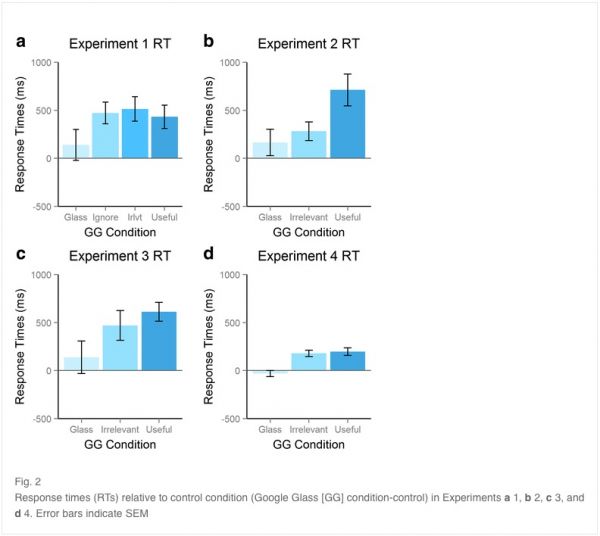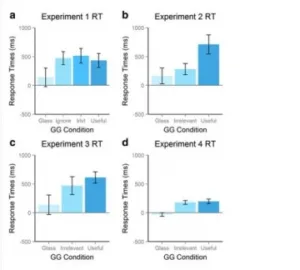Head Up Display (HUD) systems in automobiles and augmented reality glasses are moving to some form of conversion if we look at the recent press releases form several large automotive companies. In general, we have seen all kinds of HUDs and AR-HUDs described in marketing brochures as well as technology prototypes from several component manufacturers.

These kind of HUD systems are often described as the new generation HUD compared to today’s systems. They will add location correct information into the line of view of the driver. This allows a lane correct navigation system and additional information that drivers otherwise have to find on the car’s infotainment unit. It is always presented as a safety enhancement over today’s navigation system that forces the driver to look at the central screen rather than the road ahead.
As we get closer to actual release of such systems in the real world, we have to face the question of whether this perceived increase in driver safety is real or just perceived? In Great Britain a law already forbids the use of augmented reality glasses while driving. Very similar laws limiting the usage of displays carrying video content facing the driver in the USA are paying tribute to the same issue. Is such a HUD or AR-HUD system in any way a distractor for the driver and could it create dangerous situations for the drivers and other traffic participants?
From the perspective of the average driver most people can see both sides of the coin. If the navigation information is put in front of the driver instead of the middle console the eyes stay longer on the road and the reaction time to any adverse situation is shortened. On the other hand, if the HUD shows us a text message on the windshield we will definitely be distracted resulting a in potential dangerous situation.
But is this really correct? This was the topic of the study “Through the Google Glass: The impact of heads-up displays on visual attention” by Joanna E. Lewis and Mark B. Neider from the University of Central Florida. The study was conducted in late 2015, but the results have only been published recently in the Journal of Cognitive Research: Principles and Implications.
The study was performed with members of the University’s undergraduate research pool. We are talking about young people here, with an average age around 20 years of age. The main goal was to establish how the reaction time to a primary task was influenced by the overall of a secondary goal introduced via the augmented reality glasses. In this experiment the augmented reality information was provided as words displayed on a Google Glass device.
In various experiments the team looked at the reaction times of the subjects as a function of either telling them to ignore the AR text display or to remember them. The whole experiment had nothing to do with a person driving a car, but looked at how the visual attention of this person is influenced by the HUD in general. The experiment is very extensive and so is the description of the results. For detailes information, I would suggest reading the whole article under the link above.
The image describes the results in a graphical way.
 Source: Journal of Cognitive Research: Principles and Implications; Through the Google Glass: The impact of heads-up displays on visual attention
Source: Journal of Cognitive Research: Principles and Implications; Through the Google Glass: The impact of heads-up displays on visual attention
As a very short overview:
Experiment 1: Establish baseline for primary search task, while wearing the GG (Google Glass). There were several levels of secondary task. The first was ‘Glass’ with no information presented on the GG to the person. ‘Ignore’ described a situation where the test subject was told to ignore the GG information. ‘Irrelevant’ described the situation where words with no relevance to either task were displayed. ‘Useful’ described the situation where displayed words gave a hint to completing the primary task.
Experiment 2: As in experiment 1, but the test subjects were made aware that there was a test about the secondary information after the task was over.
Experiment 3: They varied the timing for the onset of the presentation of the secondary information.
Experiment 4: Varying the primary search task to create a situation with a different attention mechanism (parallel pre attentive versus selective attention).
As you can easily see, the presence of any secondary information on the GG increases the reaction time (RT) by around 500ms. If you think this is not that much, this translates at highway speeds of 100km/h (62mph) to about 13m (42′) of driving completely blind. Displaying HUD information at the wrong time could very well contribute to a dangerous situation.
Another important aspect is the fact that even if the test subject is trying to ignore the GG information, he just can’t.
In addition this test was done with young people who have the shortest reaction times, which could translate into even longer delays for older people. To be clear, this is not a driving situation under road test conditions, just the the basic science of how our visual attention is influenced by information on an AR devices. More tests will be needed and the results will surely reflect the same situation.
We are giving up some reaction time, but could gain additional warning if the AR-HUD warns us about a another vehicle braking in front of us or changing into our lane. This will require some careful weighing of advantages and the risks of such technology. As for now, the road testing is actually going on in cars fitted with HUDs. Let’s see how this goes. – Norbert Hildebrand

